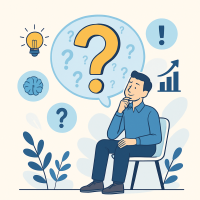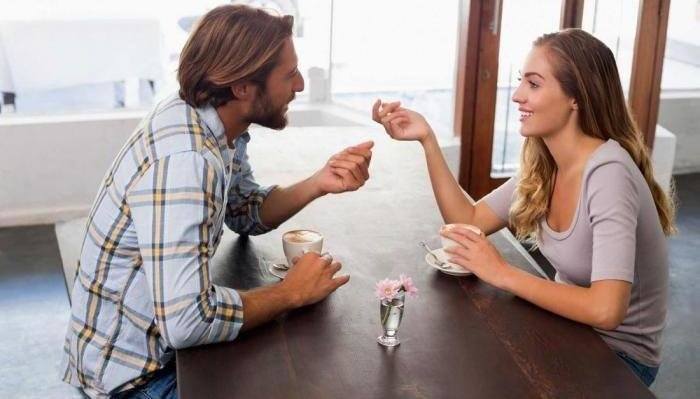The Art Of Persuasion The One Fundamental Principle
Create A Win-Win
The art of persuasion is based on the simple idea that you get what you want by enabling the other party to get what they want.

Setting The Scene For The Art Of Persuasion
This article is the first in a new series on the art of persuasion. The ideas and material that I will be sharing with you are based on my experiences of working as a professional salesman in the world of corporate sales.
This is absolutely not going to be about about me trying to sell you on the idea of sales training!
What we are going to look at are some of the core principles of communication and persuasion from that world, and reframing and applying them to everyday life both in and out of the workplace.
Why do you need to know these things?
How and why are they possibly relevant to you in your life now?
Because, as we noted in the introductory article to this new series:
- We are living in an age of unprecedented change, with far greater globalisation, connection and interdependence than at any other age in human history.
- Your capacity and capability to survive and succeed in this environment is based on your responsiveness to change, and your ability to communicate and persuade.
Being a nice friendly person with good inter-personal skills may be a good start but it is not enough.
This is not about being brash and over-bearing and trying to force people to do what you want them to do, and this is definitely not about trying to manipulate people or rip them off!
Success in the art of persuasion is not a zero-sum game, where for me to win you have to lose.
The One Fundamental Principle
There is one fundamental principle that should always be your number one priority if you really want to succeed in the art of persuasion and that is the principle of the “Win-Win”.
The art of persuasion is based on the simple idea that you get what you want by enabling the other party to get what they want.
Most people ignore this principle, and in so doing reduce their chances of success by at least 50% because they try to argue or force their point upon the other person.
Its Not What You Say But How You Say It
As the person initiating the persuasion, your success is grounded in how you speak far more than in the content of what you say.
Successful persuasion occurs when both parties are willing and eager participants in the persuasion process because they both get a lot from it!
For this to happen you, as the persuader, need to exercise the skills that will enable this to happen.
The Art Of Persuasion - Identifying And Satisfying The Other Person's Need

The basis of successful persuasion is all to do with identifying and satisfying a need that the other person has. The skill lies in:
- Knowing how to uncover that need
- Doing so in such a way that the other person is equally aware of their need
- Is happy for you to satisfy it!
Why does anybody buy into anything?
Why do people buy into anything; why do they show acceptance of and a willingness to actively support and participate in anything?
Is it all about a logical reasonable process of weighing the pros and cons?
People will rationalise their decision in all sorts of ways and provide arguments and reasons that "prove" it was a good idea and the right call.
But fundamentally people buy into things for emotional reasons and this can be distilled into one of 2 main reasons:
- AVERSION: Fear – they buy into something which removes a problem and makes them feel safe
- ASPIRATION: Opportunity – they buy into something to take advantage of a situation or to make a gain
The art of persuasion is based on the skillful use of questions
Used subtly, courteously and appropriately, questions reveal needs, aspirations and problems etc.
Also, the skilful and appropriate use of questions enables you to control the flow of a conversation or meeting.
Basically, there are two types of questions:
- OPEN QUESTIONS: that encourage people to freely reveal information and usually start with how… what… where...when… why…?
- CLOSED QUESTIONS: can help get very specific information and direct a person’s response in a specific direction. They will invariably elicit a specific response of yes or no.
The 3 phases to building a shared perception of the other person's need
Common sense
suggests that you cannot just wade into a conversation or discussion with someone with a list of questions and
fire them off and expect answers.
You have to move through a series of steps or phases, which make the other person feel comfortable with you so that they are engaged in the conversation and see a point and purpose to your questions.
The other key point to be aware of is that you and the other person are entering this conversation or discussion with very different agendas and expectations.
As you progress through each phase of the meeting or discussion you are aiming to ensure that at the end of each phase the other person and you have a shared perception.
The 3 steps or phases are known as:
-
ORIENTING - SETTING THE SCENE: you provide and exchange some high-level information, sufficient to keep the conversation moving along on the broad area of your proposal [but no detail at this stage]
-
ANALYSING - UNCOVERING NEEDS AND REQUIREMENTS: uncovering specific information
about the other person's needs and requirements that you know your proposal can meet [this will form the basis of the win-win]
-
DEVELOPING - GAINING BUYIN TO YOUR PROPOSAL: building a shared perception of
the other person's needs and how you
can satisfy them with your proposal thus creating a win-win
In the next article we are going to look in more depth at how you do all of this and we give examples based on real life situations.
We will outline simple but powerful processes to ensure that both party's needs are met, culminating in a mutually beneficial win-win.
Key Communication Concepts
Here are a few key basic terms and concepts that you need to be aware of and that will make you more effective in your communication and persuasion: Positioning statement
This is a clear and precise statement that focuses the other person's mind
when you introduce your idea or suggestion.
You don't use this until you have identified a need that the other person has and that you both recognise.
You could think of this as your "elevator pitch" - except that you don't just blurt it out as soon as meet the other person. You will do yourself a big favour if you give this some thought before you speak to the other person. Feature A feature is a description of your idea or proposal what it is and how it works. But always remember that a feature tells the other person about the idea or proposal it does not explain the benefits. e.g "that holiday house on Airbnb has a big field attached to the property" It is a common mistake to rush into describing the features of your idea or proposal too early in the process and before you and the other person have a shared understanding of that person's need or requirement.
It is also a mistake to assume that the other person will automatically see the benefit - chances are they probably won't. Benefit A benefit is a brief explanation of what a feature of your idea or suggestion can do for the other person - i.e. how it meets their need, how they stand to gain. e.g. "that holiday house on AirBnB has a big field attached to the property - which will be great for your dogs to run around in while we are relaxing and enjoying a glass of wine before dinner..." But, as above, you can only discuss this when you and the other person have a shared understanding of that person's need or requirement.
So, dont raise your pitch about the property on Airbnb until you have identified that the other person is in need of a few days break and until they have confirmed that they have that need.
Most times, most people overlook this when they are trying to persuade someone. Impression Management You should always be aware of and consciously manage the impressions that the other person is receiving about you. Think of this as your personal PR campaign. This is about how you are making the other person feel - remember what we said about this above in the basics of one to one communication. Always remember that people buy into your ideas, proposals and suggestions for emotional reasons. So always give careful thought to the impressions you are going to create - and especially in the early stages of your discussion with the other person. Expectation Management This is closely related to impression management – but is specifically to do with the delivery, implementation and follow-through on your idea, suggestion or proposal. This another area where most people fail badly. Once the other person has bought into and commited to go ahead, you should pay close and careful attention to keeping them informed and up-to-date with all aspects of the follow-through.
This includes good news, bad news and no news situations. Most people wrongly assume that the other person will only want to hear from them right at the "point of delivery". People have a need to kept informed at all stages of the implementation process for 2 reasons:
The result was that within a short space of time council engineers were on site and the remedial work was undertaken very quickly!
Free Download
The Art Of Persuasion 1 - Summary Notes
Persuasion
[1] The Art Of Persuasion The One Fundamental Principle - Create A Win-Win
[2] The Art Of Persuasion Advanced Communication Skills - Gaining BuyIn
[3] The Art Of Persuasion Planning For Success - Here's How To Do It!
Change
Getting From A to B Is Not Aways A Straight Line
Group Culture - The Invisible Software That Rules Your Life
Change Questions To Change Your Outcomes
Communication
How To Influence without Authority - 6 Key Tips
Return from "The Art Of Persuasion The One Fundamental Principle" to: Communication Persuasion and Change
Or to: Walking The Talk
LATEST ARTICLES
The Battle For Your Mind - How To Win Inner Freedom In A Digital Age Of Distraction
 From External Events to Inner Events. We often think of “events” as things that happen out there: the traffic jam, the rude comment, the delayed email reply. But what truly shapes our experience is wh…
From External Events to Inner Events. We often think of “events” as things that happen out there: the traffic jam, the rude comment, the delayed email reply. But what truly shapes our experience is wh…How to See Your Thoughts Without Becoming the Story
 A Practical Guide to Thought-Awareness. You can spend your life inside the stories of your mind without ever learning how to see your thoughts clearly and objectively. Most of the stuff we tell oursel…
A Practical Guide to Thought-Awareness. You can spend your life inside the stories of your mind without ever learning how to see your thoughts clearly and objectively. Most of the stuff we tell oursel…The Collison Decision Matrix - A Simple Framework for Better Choices
 The Collison Decision Matrix Is A Practical Everyday Thinking Tool. Most of us spend a surprising amount of time worrying about decisions. From small ones such as what to wear, what to eat, what to te…
The Collison Decision Matrix Is A Practical Everyday Thinking Tool. Most of us spend a surprising amount of time worrying about decisions. From small ones such as what to wear, what to eat, what to te…The Power Of Asking The Right Question
 The Power Of Asking The Right Question Lies In The Quest For Insight. To experience the power of asking the right question you must develop the practice of asking questions. The best way to improve th…
The Power Of Asking The Right Question Lies In The Quest For Insight. To experience the power of asking the right question you must develop the practice of asking questions. The best way to improve th…Site Pathways
 Here is a site pathway to help new readers of Zen-Tools navigate the material on this site. Each pathway is based around one of the many key themes covered on this site and contain a 150 word introduc…
Here is a site pathway to help new readers of Zen-Tools navigate the material on this site. Each pathway is based around one of the many key themes covered on this site and contain a 150 word introduc…How To Live With Contradiction - Beyond Thought Let Stillness Speak
 A major impact on so many peoples' lives is the situational contradiction of unfilled realistic expectations. So where does all this leave us? Well here we are, with mental equipment that is more lim…
A major impact on so many peoples' lives is the situational contradiction of unfilled realistic expectations. So where does all this leave us? Well here we are, with mental equipment that is more lim…How To Trust The Process Of Mindfulness - Right Now
 In mindfulness, the process isn’t some distant goal — it's what is happening right now. When we talk about how to trust the process of mindfulness the credibility of the process is heavily dependent…
In mindfulness, the process isn’t some distant goal — it's what is happening right now. When we talk about how to trust the process of mindfulness the credibility of the process is heavily dependent…Inner Mastery For Outer Impact - Mental Clarity For Effective Action
 Insights only matter if they translate into consistent action. In a world crowded with quick fixes and motivational soundbites, the theme “Inner Mastery for Outer Impact” calls us to something more e…
Insights only matter if they translate into consistent action. In a world crowded with quick fixes and motivational soundbites, the theme “Inner Mastery for Outer Impact” calls us to something more e…The Wise Advocate - Helping You Achieve The Very Best Outcome
 The focus of your attention in critical moments of choice either builds or restricts your capacity for achieving the best outcome. When we talk of 'The Wise Advocate' its easy to think of the consigl…
The focus of your attention in critical moments of choice either builds or restricts your capacity for achieving the best outcome. When we talk of 'The Wise Advocate' its easy to think of the consigl…Trust The Process - Beyond The Cliche
 The phrase "trust the process" has become a cliche, the woo-woo mantra of the "self help" industry. Those three little words feel like they ought to mean something useful but hidden behind them are a…
The phrase "trust the process" has become a cliche, the woo-woo mantra of the "self help" industry. Those three little words feel like they ought to mean something useful but hidden behind them are a…The Dopamine Delusion - Why Anticipation Beats Achievement
 The thrill we feel is not in the having, but in the wanting. The more we have, the more we want. The more things we acquire and the easier things get for us, the more discontent we feel. The more spo…
The thrill we feel is not in the having, but in the wanting. The more we have, the more we want. The more things we acquire and the easier things get for us, the more discontent we feel. The more spo…The Power Of Silence Is Experienced In Your Use Of Language
 Practise the "Beneficial Neurological Delay" for optimal comprehension. The power of silence is experienced in your use of language, specifically: - How you formulate the words you use to think and in…
Practise the "Beneficial Neurological Delay" for optimal comprehension. The power of silence is experienced in your use of language, specifically: - How you formulate the words you use to think and in…



